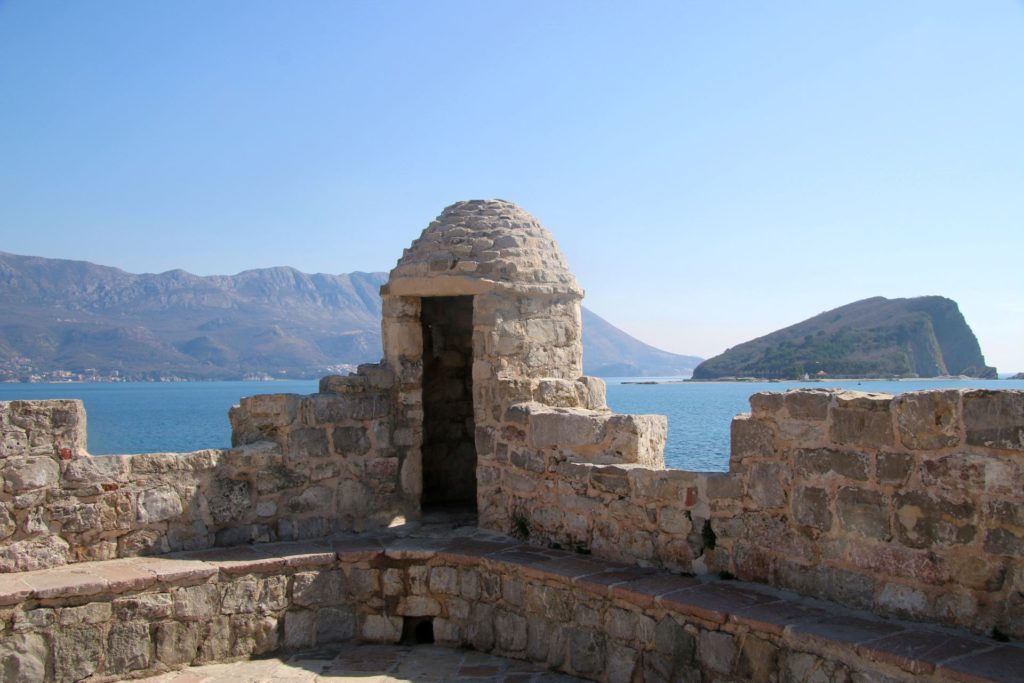 Dozens of travel journalists and bloggers have written articles about Budva, the capital of Montenegro’s tourism. Some of them find this resort disappointing because of the overcrowded beaches, numerous high-rise buildings, loud music and high prices, but most visitors – in particular young people – are enchanted with Budva’s wonderful beaches, charming old town and vibrant night life.
Dozens of travel journalists and bloggers have written articles about Budva, the capital of Montenegro’s tourism. Some of them find this resort disappointing because of the overcrowded beaches, numerous high-rise buildings, loud music and high prices, but most visitors – in particular young people – are enchanted with Budva’s wonderful beaches, charming old town and vibrant night life.
Personally, I strictly avoid Budva in the main season when it is noisy and full of tourists, but it is one of my favorite places for a day tour in spring or autumn. When the first sunny days invite for a trip to the coast, we can hardly wait to go. On arrival, we drink our espresso at the marina where wealthy people moor their luxury yachts. A relaxed walk along the promenade that leads from the old town along the sea coast to Dukley Gardens is a must, and on our way back we often stop at “Krsto’s” restaurant where we eat mussels on the beach. In the afternoon, a walk along the steep rocks to Mogren Beach always fills us with new energy.
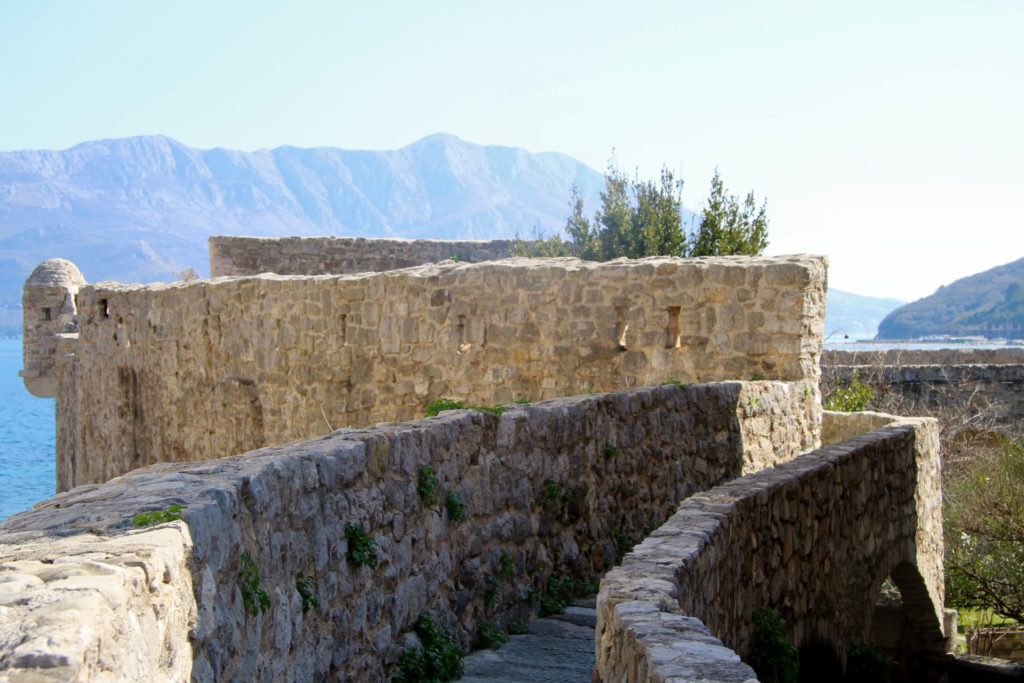 But most of all we like to roam through the narrow, winding streets of the Old Town. The heart of Budva with its impressive city walls, Mediterranean-style stone houses, small squares, churches and other colorful places is especially attractive when you don’t have to find your way through the crowd. In this time of the year, the atmosphere is relaxed and charming.
But most of all we like to roam through the narrow, winding streets of the Old Town. The heart of Budva with its impressive city walls, Mediterranean-style stone houses, small squares, churches and other colorful places is especially attractive when you don’t have to find your way through the crowd. In this time of the year, the atmosphere is relaxed and charming.
Did you know that Budva is one of the oldest towns on the Adriatic Coast? The first mention of a settlement here goes back to the 5th century B.C. The founding of Budva was allegedly connected to Cadmus, mythical son of Phoenician King Agenor. Cadmus and his wife Harmonia were expelled from Thebes and headed in an oxen cart to the country of Enchilei, where they founded a new town: Bouthoe or Budva. According to this legend, Budva gained its name after the oxen (“Bous” is Greek for ox) that brought Cadmus and Harmonia to Budva.
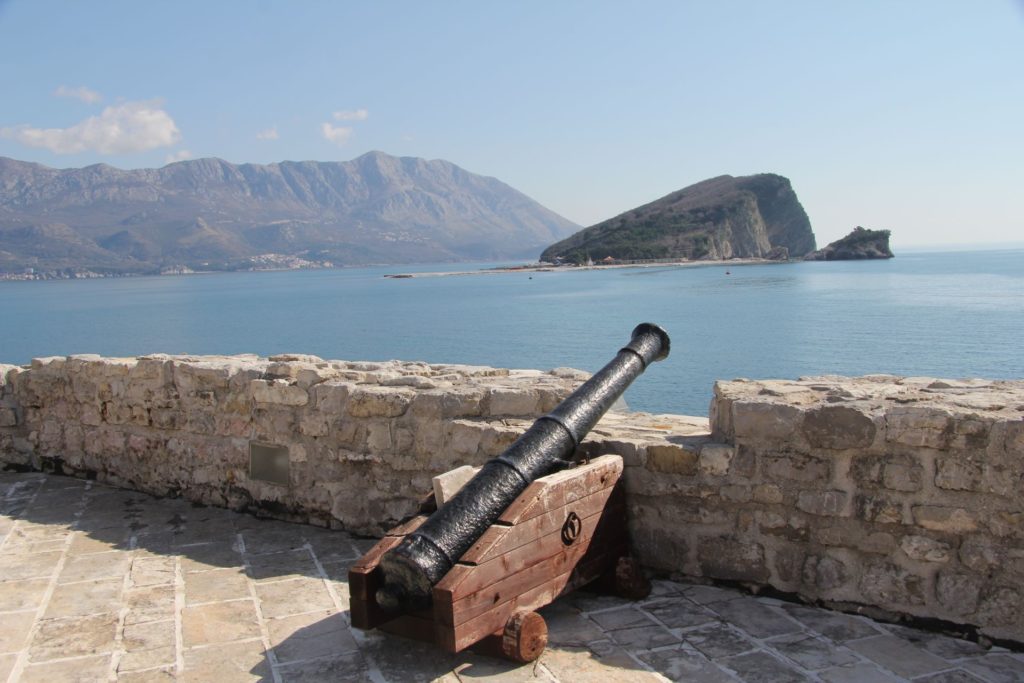 The first walls already existed in the 9th century, when a Benedictine monastery (now the Church of Santa Maria in Punta) erected a wall as a protection from the sea. In the 16th century, the whole town was surrounded by a big wall with six towers, which were destroyed in the great earthquake of 1667. New walls were built on the foundations of the old ones. Significant damage was also caused by the 1979 earthquake.
The first walls already existed in the 9th century, when a Benedictine monastery (now the Church of Santa Maria in Punta) erected a wall as a protection from the sea. In the 16th century, the whole town was surrounded by a big wall with six towers, which were destroyed in the great earthquake of 1667. New walls were built on the foundations of the old ones. Significant damage was also caused by the 1979 earthquake.
Maybe it sounds strange, but I had never visited the 450 meters long city walls until last weekend. And it was a nice experience! Although the iron gates were open, entrance fee (€ 1.50) was not charged yet and obviously, the walls do need some cleaning prior to the tourist season…
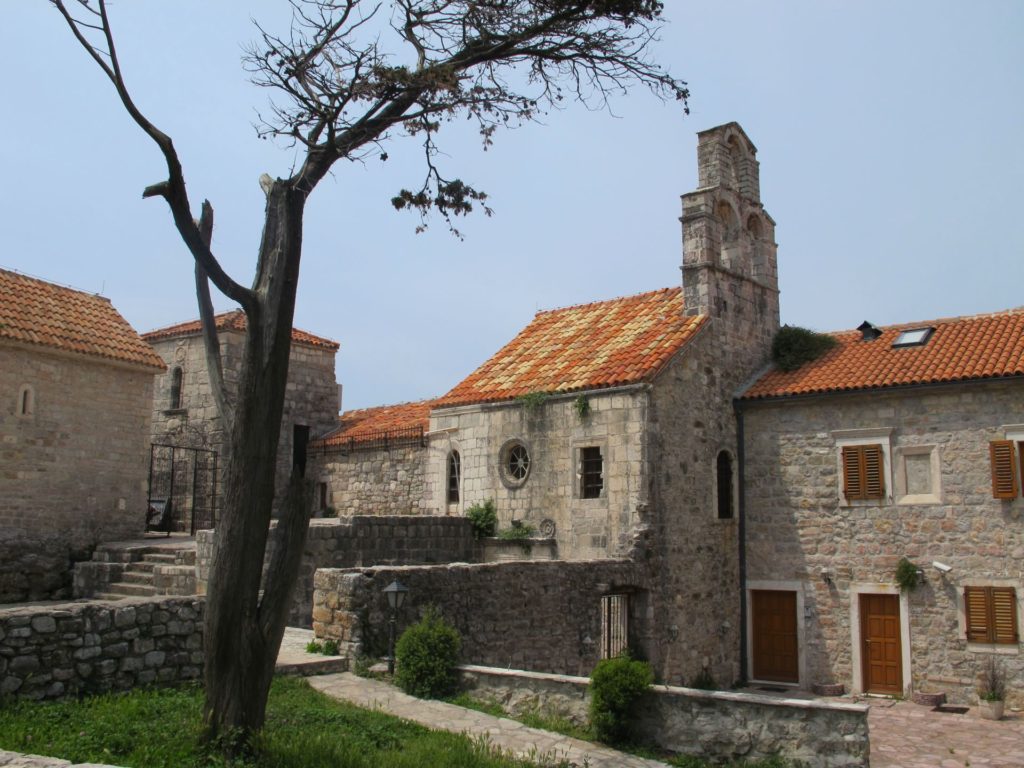 Although the official entrance is near the Citadel, we started the walk from the other side and climbed the stairs to the walls from the street that leads to the left, immediately behind the main gate. The views from the top were really nice.
Although the official entrance is near the Citadel, we started the walk from the other side and climbed the stairs to the walls from the street that leads to the left, immediately behind the main gate. The views from the top were really nice.
Through the loopholes, we looked out on the Avala Hotel, the marina and the sea. On the other side, we could see the old stone houses, gardens and narrow streets of the Old Town.
Although the passages are quite narrow (I wonder how tourists can pass each other during the high season?), the walls gradually widen to form the Citadel, once a tremendous fortification on the Adriatic, but now a peaceful venue for theatre performances.
Entrance fee is € 2.50, but the Citadel is a must for photographers, as you can enjoy wonderful panoramas from its roof.
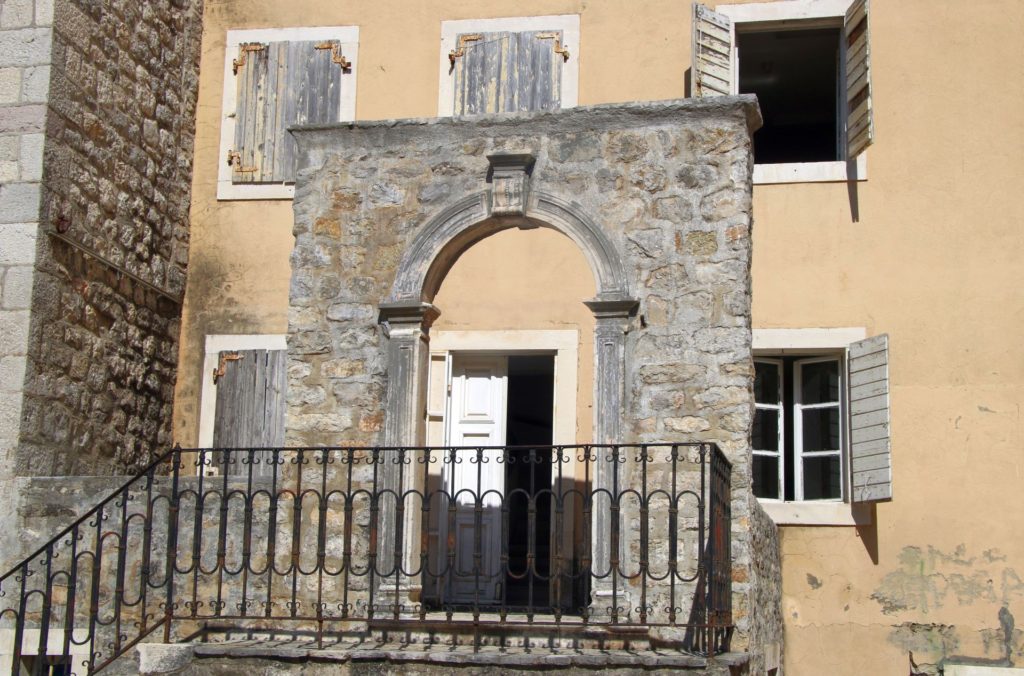 Opposite to the Old Town is Sveti Nikola, the only island in the vicinity of Budva. It is connected with Slovenska Beach by a sandbank that is sometimes only 0.50 m deep, depending on the tide. According to legend, when St. Sava was on his way to Mount Athos from Budva, he could not board the ship because of the big waves, so he threw stones and made a shallow spot where he went over and boarded the galley.
Opposite to the Old Town is Sveti Nikola, the only island in the vicinity of Budva. It is connected with Slovenska Beach by a sandbank that is sometimes only 0.50 m deep, depending on the tide. According to legend, when St. Sava was on his way to Mount Athos from Budva, he could not board the ship because of the big waves, so he threw stones and made a shallow spot where he went over and boarded the galley.
Around the square in front of the Citadel is a cluster of interesting churches and an archeological site, i.e. the ruins of Roman terms. The church of St. John – a catholic church, the highest and biggest one in Budva, dates back to the 7th century. A few steps further is the Church of Holy Trinity, an orthodox church built in 1804 and the small picturesque church on the opposite side of the square is Santa Maria in Punta, built by Benedictine monks in the 9th century.
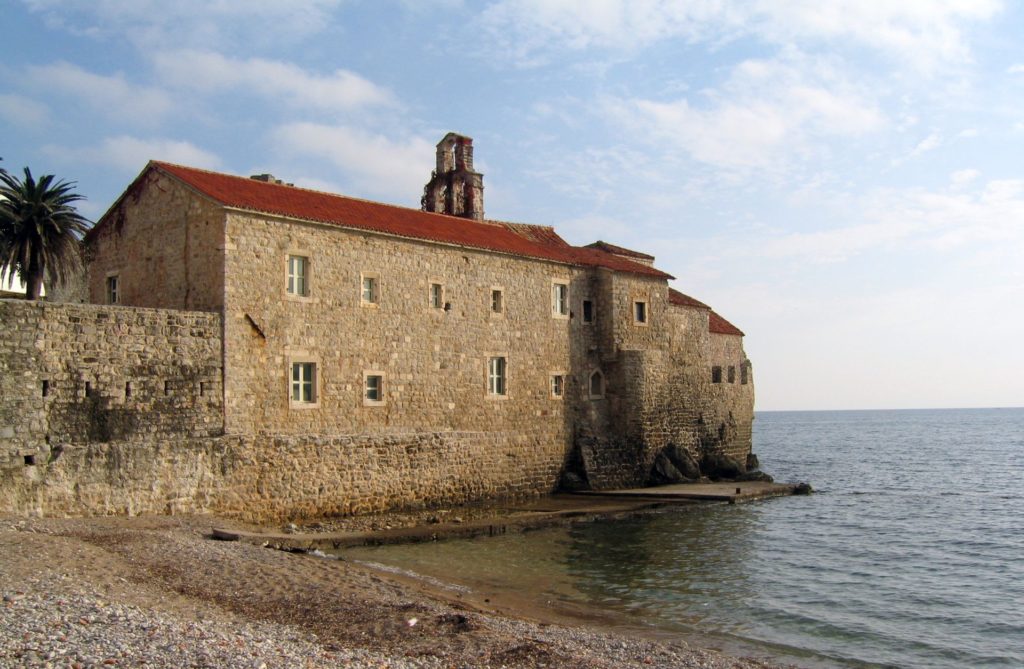 What else can you find in the Old Town of Budva? First of all, the Budva City Museum, Roman mosaics, and a lot of picturesque places and corners. There are also nice shops and boutiques, trendy pubs and national restaurants. Romantic open-air terraces and subtropical gardens complete the picture.
What else can you find in the Old Town of Budva? First of all, the Budva City Museum, Roman mosaics, and a lot of picturesque places and corners. There are also nice shops and boutiques, trendy pubs and national restaurants. Romantic open-air terraces and subtropical gardens complete the picture.
Fortunately, the Old Town of Budva has succeeded in maintaining its typical Mediterranean character, which is by far its most attractive tourist feature. And that is why Budva will certainly keep its image as most-visited tourist destination of Montenegro.
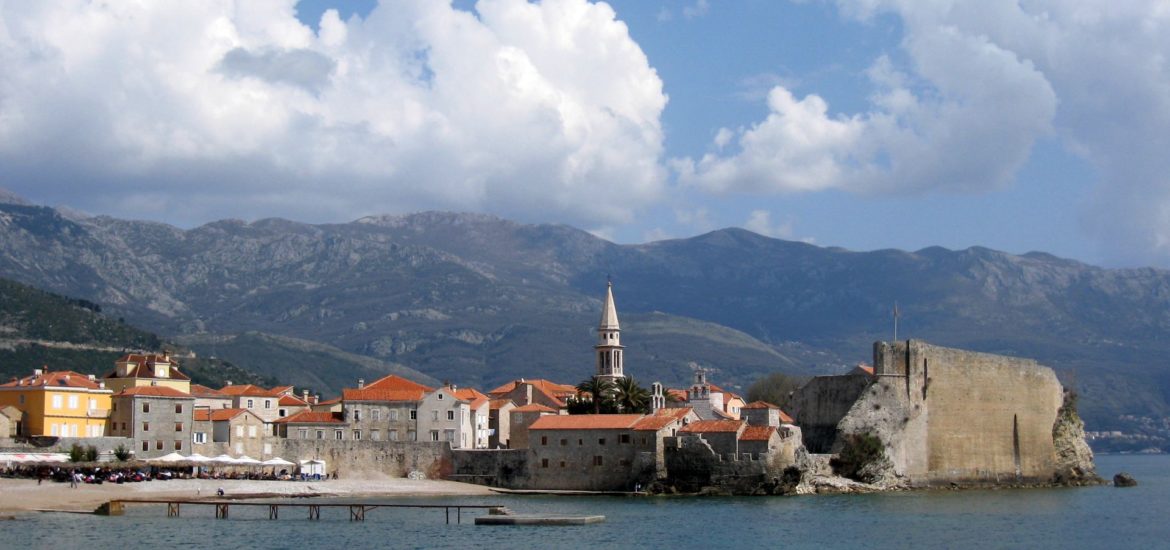
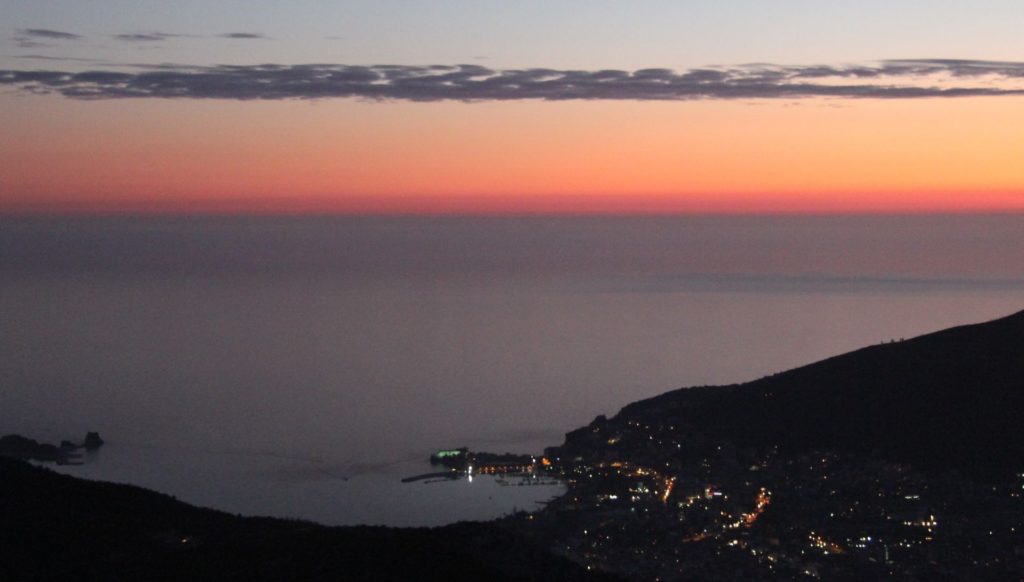
I had conflicting feelings on Budva. I quite enjoyed the old town, it was quite when we we’re there in September. From a “westerners” perspective, I was sad with the ugly condos all around the old town, but I don’t live there so I try to be objective. Since I too, dream of spending later years after saving in Montenegro, I might end up living in one of ‘those’ buildings lol.
[…] is close to the most important tourist centers of Budva and […]
[…] I will never forget the first time I saw the Budva Riviera, almost 50 years ago. Coming from the Netherlands, I was traveling via Titograd to Budva on a local bus, ready for a new challenge in my life: a seasonal job at the reception desk of the Avala Hotel. All of a sudden, the bus passed over the coastal mountains and I was struck by a glorious view – down there, on the other side of the green slopes overgrown with bright yellow broom was the blue Adriatic Sea and a little town looking like a scale model: Budva. […]
[…] those who spend their holidays in Budva (or Tivat) and have a car available, I would like to recommend a nice round trip through the region […]
[…] is located within the municipality of Budva and is part of the Budva Riviera. It has 1400 permanent inhabitants and is surrounded by olive […]
[…] THE OLD TOWN OF BUDVA – Living in Montenegro 🙂 (montenegro-for.me) Opština Budva | Zvanična prezentacija […]